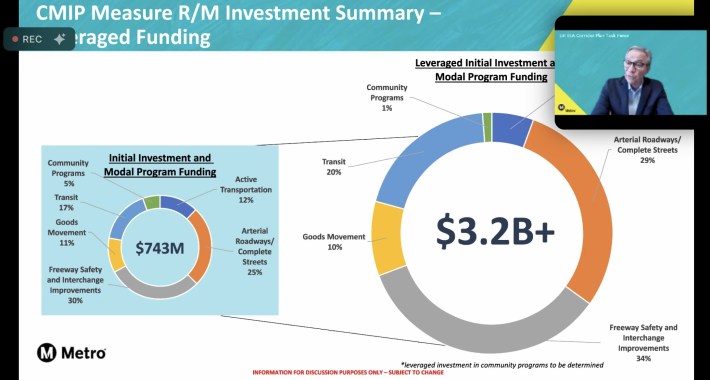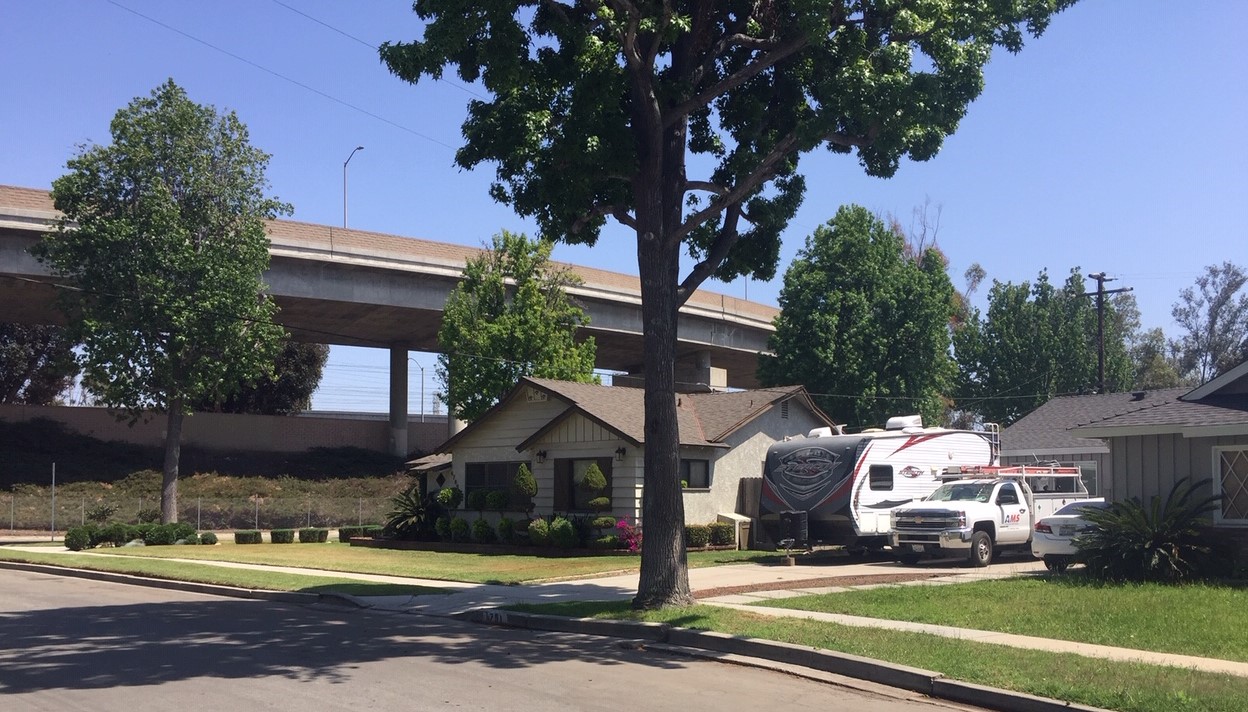Remember when community pressure killed Metro and Caltrans' planned $6+ billion widening of the lower 710 Freeway? That was less than two years ago. Metro and Caltrans canceled their plans to demolish hundreds of homes, apartment buildings, and businesses in Black and Latino neighborhoods. At the time, Metro proclaimed it had turned over a new leaf, and was now centering equity and supporting multimodal transportation, and that Metro home demolitions for freeway expansion were a thing of the past.
This week, Metro is back with a new proposal to widen the lower 710 Freeway. But wait, there's some lipstick on this pig! In truth, it's not as bad as the mega-widening that Metro was hell-bent on a couple years ago, but there's still harmful freeway widening.
Metro already had sales tax funding - over a half-billion dollars - set aside for the 710 Freeway. To determine how to spend that money, Metro convened a stakeholder task force to come up with a "multimodal corridor investment plan." In early task force meetings, Metro staff pledged that there would be no freeway widening, no demolitions.
This week Metro released its proposed 710 corridor plan. The widening is back, and demolitions maybe, too.
Metro is hosting a series of meetings to share the latest proposal, and to hear public input.
Streetsblog attended a Metro 710 meeting yesterday and asked whether any of the proposed projects would include residential demolitions. Metro's Executive Officer for Multimodal Integrated Planning Michael Cano responded that some demolitions were still possible, stating there would be "zero to minimal right-of-way impacts."
And how about widening the 710? The plan includes freeway widening, which Metro couches in the agency's favorite loophole: adding new auxiliary lanes - lanes that go from one on-ramp to the next off-ramp.
Under current state regulations, adding an auxiliary lane shorter than one mile long is assumed to not significantly adversely impact the environment. Metro staff seem to have convinced themselves that when they use the state's loophole to add more lanes, inducing more traffic and more pollution, the projects don't cause harm, because technically Metro is not really widening the main stem of the freeway.
(Metro and Caltrans use the state aux lane loophole to widen freeways in low-income communities of color, then perversely claim that these freeway expansions won't increase pollution and will benefit surrounding communities. Metro has also used the aux lane loophole inappropriately to avoid full environmental clearance processes and mitigation, including - perhaps illegally - for projects where the rule doesn't apply - freeway expansion projects that go beyond just aux lanes. Metro and Caltrans avoid scrutiny [even pesky federal clean air law] by approving miles of freeway expansion piecemealed into multiple short aux lane segments.)
Metro's proposed 710 plan would widen the 710 Freeway in at least two places: adding new auxiliary lanes from Willow Street to Wardlow Road, and from Del Amo Boulevard to Long Beach Boulevard - both in pollution-burdened neighborhoods in the city of Long Beach.
The proposed plan also calls for retooling twelve 710 Freeway ramp locations, called "interchange improvements" (because calling these intersections "interchanges" makes them eligible for more funding.) If Metro's past performance is any indicator, these projects will widen ramps and streets, making these already dangerous and unwelcoming locations even worse for people on foot and on bike.
Here's Metro's list of proposed 710 "interchange improvements":
- 710/105 interchange
- 710/405 interchange
- Alondra Boulevard, with "modification" of southbound 710 to 91 Freeway connectors
- Anaheim Street
- Del Amo Boulevard
- Firestone Boulevard
- Florence Avenue
- Imperial Highway
- Long Beach Boulevard
- Pacific Coast Highway
- Wardlow Road
- Willow Street
That's a lot of freeway, ramp, and road widening.
So, what else is in Metro's 254-page draft 710 Freeway widening plan?
Pro-tip 1: if you're going to look at the document, skip the first 175 pages where Metro mostly pats itself on the back for what an earth-shatteringly great community-focused equitable process the agency has used to date.
(Metro staff did a lot of back-patting during their presentation yesterday and in their storymap website, too. Let's be totally clear about what this process was: Caltrans and Metro badgered Black/Latino neighborhoods for more than two decades, pushing to widen the 710 Freeway from 8 to 16 lanes. When the community caught Metro lying about federal Clean Air Act compliance, Metro staff and leadership resisted canceling the project. A year later, Metro sobered up, made pledges not to widen or demolish and to really listen to the community this time. For the past year and a half, Metro, having exhausted all other alternatives, finally engaged in a fairly worthwhile community process.)
Pro-tip 2: After all the back-patting, the document is mostly lists of projects, with little to no descriptions or details.

The main tranches of funding would go to freeway/ramp/road expansion: "Freeway Safety and Interchange Improvements," plus Goods Movement and Arterial Roadways/Complete Streets (again, past performance shows that Metro has consistently emphasized the roadway part, resisting the non-car-centric components except as a sort of de minimis fig leaf tacked on).
From there, about a third of the overall project funding would go to transit, active transportation (walking and bicycling), and community programs.
The main alliance of nonprofit community groups that has long fought 710 expansion is the Coalition for Environmental Health and Justice. CEHAJ is encouraging concerned folks to attend upcoming meetings, ask questions, and make comments. Find talking points at East Yard Communities for Environmental Justice (EYCEJ) Instagram. CEHAJ recently submitted a comment letter critical of problematic hydrogen-powered solutions embedded in Metro's plan, urging "truly zero-emission solutions" - mainly "direct transportation electrification" via catenary-electric and battery-electric power.
Learn more about Metro 710 widening and give input at the remaining in-person and virtual meetings. Comments are due by Friday March 1.
Metro staff anticipate the plan will go the Metro board in March for approval.







